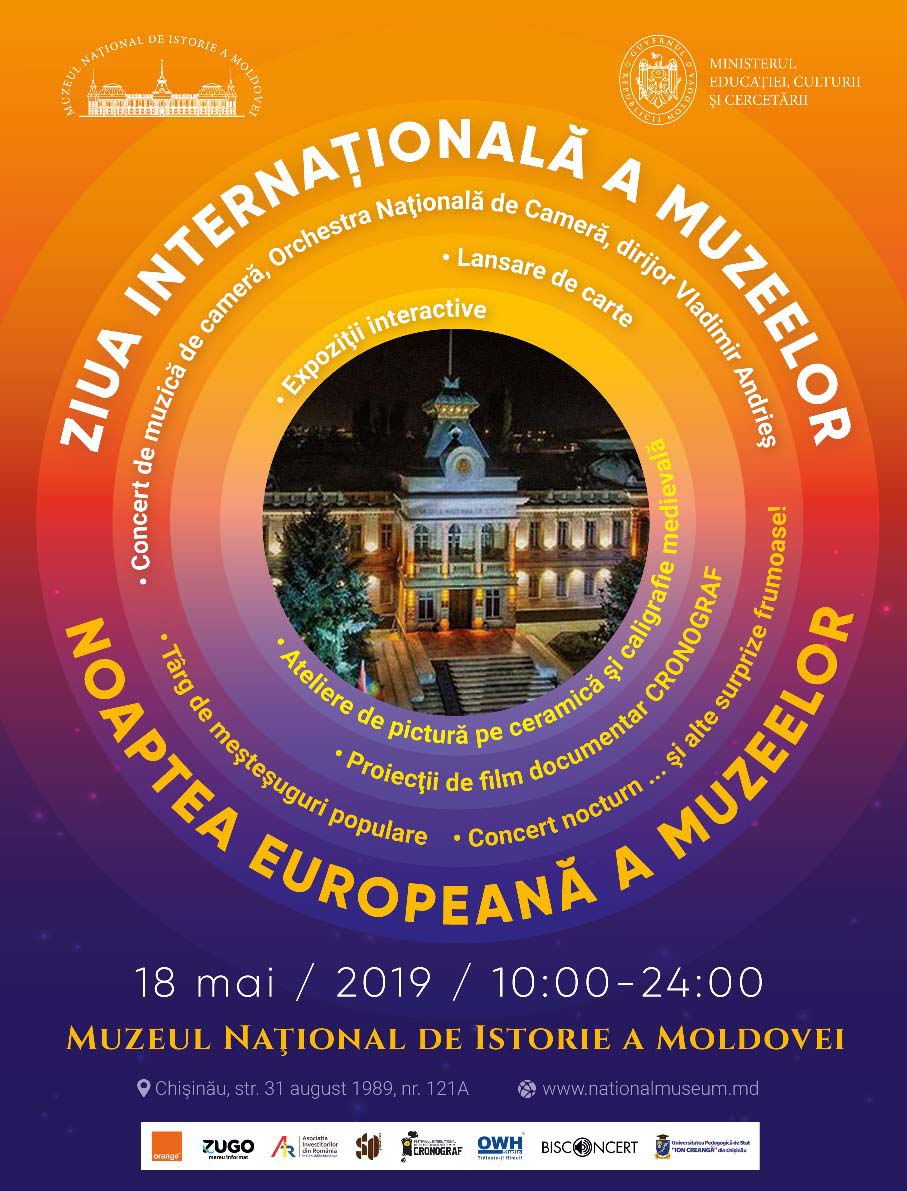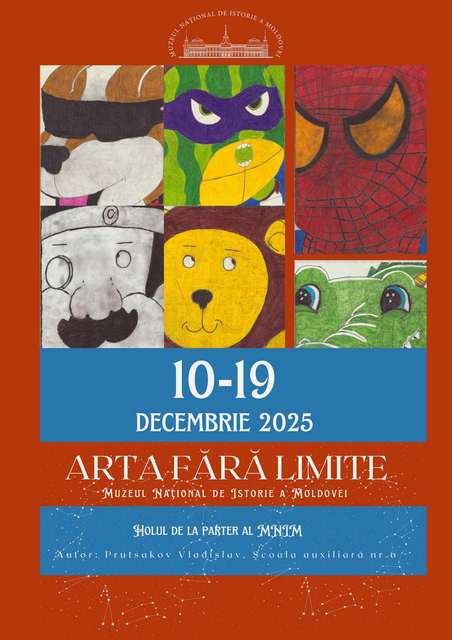  Events Archive Events Archive
The International Museum Day and European Night of Museums
18 May 2019
National Museum of History of Moldova, under the patronage of the Ministry of Education, Culture and Research, organized on May 18, 2019, between 10.00 – 24.00, the International Museum Day and European Night of Museums. This year the events was held under the theme “Museums as Cultural Hubs: The future of tradition”. Program included: Visit of the Exhibitions 1. Permanent exhibitions „History and civilization”
2. Innovatic Fest Roboshow, rooms 1-4, 10:00 – 24:00
At the exhibition visitors enjoyed the poetry recitals by the Tespian robot and danced together with the dancing robots, remained amazed at the ease with which robot spiders overcome obstacles and fascinated for life by the star of the Las Vegas Innovation Exhibition 2019 - the puppy Aibo! Access to the exhibition “Innovatic fest” was possible with discounted tickets. 3. “Bucharest: a Novecento portrait”, the lobby, from 10:00 to 24:00
The temporary exhibition about the 20th century Bucharest bringed this city to the attention of the public from the perspective of a twentieth-century journey, without limiting itself to the evolution of urban society, but also trying to show some changes in behavior, way of life, concerns, living and indoor surroundings. 4. “Fashion and style in Chişinău and Bucharest of the 30s", room 12 / Blue Room, 10:00 - 24:00
A unique collection of dresses of the famous stars of the Romanian stage and some of the most rare accessories from the 30's of the 20th century. Every dress has a special story. The exhibition represents a retrospective of fashionable silhouettes of those years, which fits perfectly with the interior of the National Museum of History of Moldova. Guests will also be able to admire several images that demonstrate the beauty, elegance, expressiveness of the silhouettes and the glow of the creations of that time. 5. New pieces from the collection of the National Museum of History of Moldova.
In the framework of the exhibition “Antiquity and Medieval Age” were presented, for the first time, copies of two metopes from the Trajan's Column and the layout of the Căuşeni Church. Participation in the Events 1. Book presentation „Piese de giuvaergie antică din colecțiile Muzeului Național de Istorie a Moldovei”, author Ana Niculiță, blue room of the museum, 12:00.
2. Chamber music concert, National Chamber Orchestra, Conductor Vladimir Andrieș, blue room of the museum, 13:30 – 14:30
3. Musical show performed by the students of the lyceum S. Rahmaninov, blue room of the museum, 16:00 – 17:00
4. A movie at the museum. „Expedițiile memoriei”, room 10 / Modern history. OWH Studio; recent productions from the Cronograf Festival. 17:00 – 20:00 5. Painting on ceramics workshop. Room 6 / Red Room.
Workshop by Svetlana Şugjda (Faculty of Fine Arts and Design, “Ion Creangă” State Pedagogical University) and Alena Stoica, ceramist artist. Visitors had the opportunity to paint decorative motifs typical for the Cucuteni culture and to take home their works. My pot - my work! from 10:00 to 16:00 6. Medieval calligraphy workshop. Room 8.
Handing feathers and nibs on old paper with wonderful inks, visitors wrote their own letters and papers, strengthened them with the seal of the museum and gave them to their loved ones. No one left the museum without a memory! from 10:00 to 16:00 7. Craftsmen fair (with selling). Museum courtyard, 10:00 – 20:00
Creative workshops with the participation of craftsmen Ion Prividiuc – potter Grigore Pasternac – carpenter Oksana Bureak – jewelry from leather and natural stones Victor Pelin - carpenter Nadejda Sîrbu – toys from clay Olga Koshel – potter 8. Night concert, museum courtyard, from 20:30 – 23:00 ... and other beautiful surprises! On May 18, 2019, between 10:00 and 24:00 hours, access to the museum's rooms and participation in all activities from the program, with the exception of the Innovatic fest exhibition, were free of charge.
|



































































